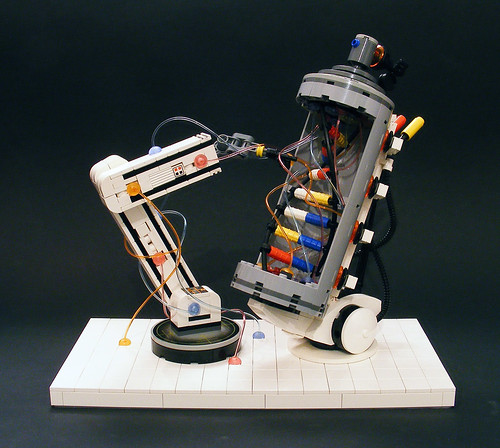A few days ago F. Sherwood Rowland, a retired professor of chemistry from UC Irvine, passed away at the age of 84. Professor Rowland is best known for being awarded the 1995 Nobel Prize in Chemistry for his work on chlorofluorocarbons. These compounds, known as CFCs, had a number of uses, such as refrigerants in cooling systems and propellants in aerosol spay cans. Rowland and his colleagues realized that CFCs were long-lived compounds that would remain in the environment, and they were light enough that they would find their way into the upper reaches of the atmosphere. There they would be bombarded by UV light (wavelengths of light that largely don't reach us down here at the earth's surface as they are absorbed by the ozone layer) which would cause them to break down. The product of this breakdown would be free radicals. That's a term you've probably heard of in terms of health issues - that free radicals cause damage to the body and that antioxidants (e.g. certain compounds in blueberries) can help counteract the effects. The reason free radicals cause damage is that they include unstable atoms that need one electron to become more stable. They will get this electron from whatever molecule they run into. If this is in your cells, a hydroxyl radical can run into your DNA or your proteins, and lead to damage to these important biomolecules. If this is in the upper atmosphere, chlorine radicals can run into ozone (O
3) molecules and cause them to break down into the more common O
2 molecules. The significance is that a drop in the concentration of ozone in the upper atmosphere lets more harmful UV light through to those of us down here at the earth's surface. In response to the work of Rowland and his colleagues, the Montreal Protocol in 1987 started to phase out the production of CFCs worldwide in order for the ozone layer to recover.

LEGO builder Cole Blaq has made a whole series of
spay can models that are really fascinating.
Decode is one of his most recent. I thought it was particularly nice for this blog, since in addition to relating to spray cans, there are also themes of DNA and robotics.

No comments:
Post a Comment